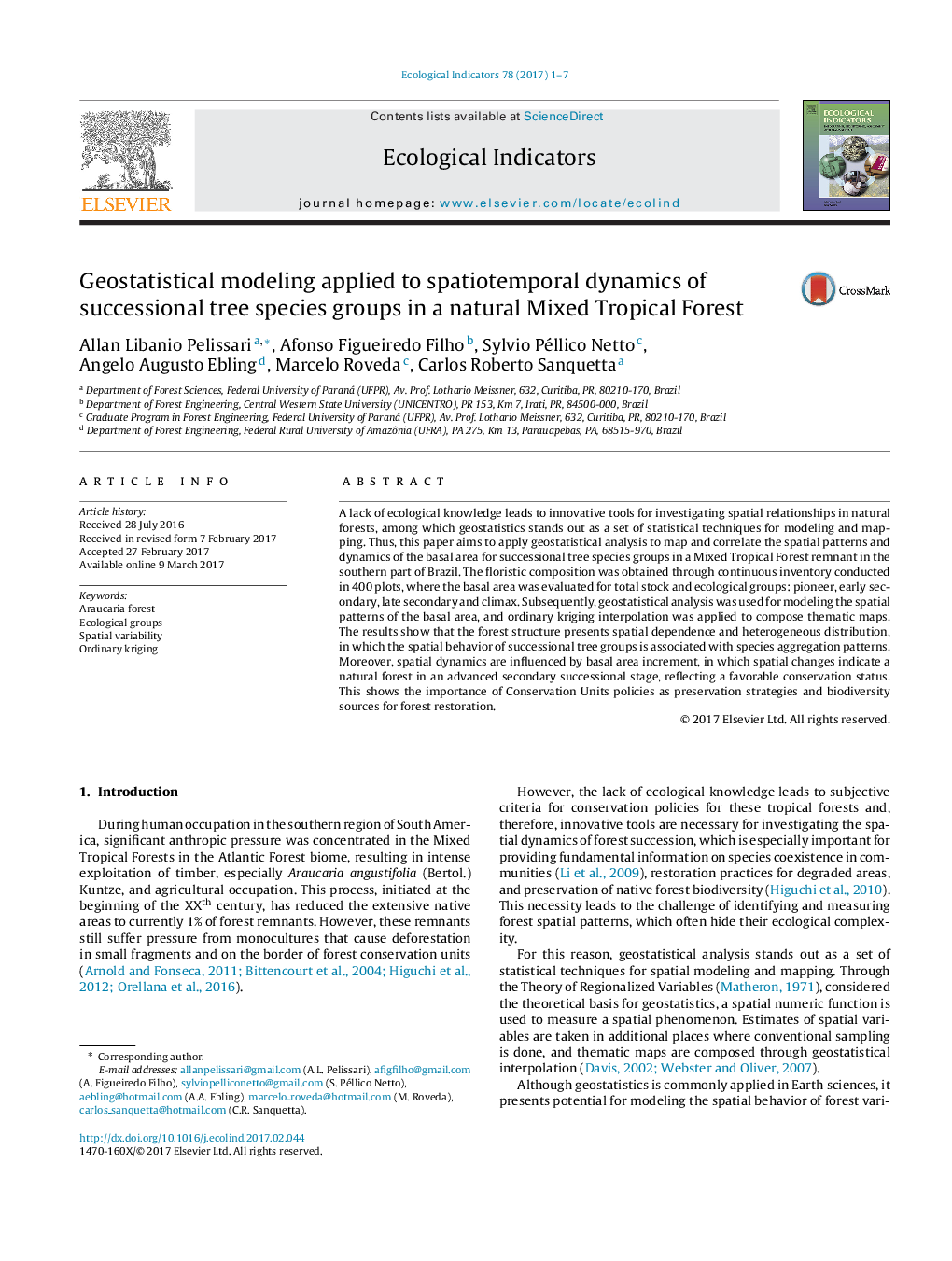| Article ID | Journal | Published Year | Pages | File Type |
|---|---|---|---|---|
| 5741607 | Ecological Indicators | 2017 | 7 Pages |
â¢Ecological succession groups present heterogeneous spatial patterns.â¢Successional spatial distribution is associated with species aggregation patterns.â¢Basal area spatial pattern is an ecological indicator of successional stage.â¢Mixed Tropical Forest remnant is in an advanced successional secondary stage.
A lack of ecological knowledge leads to innovative tools for investigating spatial relationships in natural forests, among which geostatistics stands out as a set of statistical techniques for modeling and mapping. Thus, this paper aims to apply geostatistical analysis to map and correlate the spatial patterns and dynamics of the basal area for successional tree species groups in a Mixed Tropical Forest remnant in the southern part of Brazil. The floristic composition was obtained through continuous inventory conducted in 400 plots, where the basal area was evaluated for total stock and ecological groups: pioneer, early secondary, late secondary and climax. Subsequently, geostatistical analysis was used for modeling the spatial patterns of the basal area, and ordinary kriging interpolation was applied to compose thematic maps. The results show that the forest structure presents spatial dependence and heterogeneous distribution, in which the spatial behavior of successional tree groups is associated with species aggregation patterns. Moreover, spatial dynamics are influenced by basal area increment, in which spatial changes indicate a natural forest in an advanced secondary successional stage, reflecting a favorable conservation status. This shows the importance of Conservation Units policies as preservation strategies and biodiversity sources for forest restoration.
